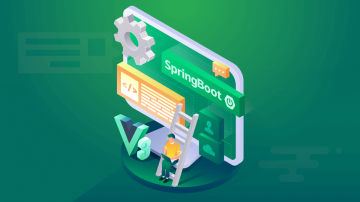Spring Boot教程详细介绍了Spring Boot框架的基本概念、环境搭建、基本使用方法以及一系列实用功能,帮助开发者快速入门并实践Spring Boot开发。文章涵盖了从开发环境准备到项目实战的全过程,旨在使开发者能够高效地构建和部署Spring Boot应用。
SpringBoot教程:从入门到实践 SpringBoot简介SpringBoot是什么
Spring Boot是由Pivotal团队提供的基于Spring框架的微服务开发框架。它是为了简化新Spring应用的初始搭建以及开发过程而创建的。Spring Boot使用约定大于配置的原则来简化开发者的配置,使得开发者能够快速搭建一个独立运行的Spring服务。
Spring Boot通过提供一些默认配置,使得开发者能够快速地构建出一个功能完善的、生产级别的应用,而无需进行复杂的配置。它支持多种开发环境和数据库,使开发者能够专注于业务逻辑的实现。
// 示例代码:简单的Spring Boot应用
@SpringBootApplication
public class Application {
public static void main(String[] args) {
SpringApplication.run(Application.class, args);
}
}SpringBoot的优势
- 快速集成:Spring Boot简化了Spring应用的开发过程,使得开发者能够快速地搭建并运行一个完整的Spring应用。
- 自动配置:Spring Boot提供了大量的默认配置,使得开发者无需手动配置许多常见的应用配置。
- 独立运行:Spring Boot应用可以封装成一个可执行的JAR文件,并且可以独立运行。
- 嵌入式服务器:Spring Boot支持内嵌式的Tomcat、Jetty或Undertow服务器,使得应用可以快速启动和运行。
- 外部化配置:Spring Boot支持通过外部化配置来修改应用的行为,这使得应用更加灵活,适合不同环境的部署。
- 健康监测:Spring Boot提供了健康监测的功能,使得应用能够自动报告自身的运行状态。
- 无代码生成:Spring Boot不需要开发者编写大量的配置代码,大大提高了开发效率。
SpringBoot的核心概念
- Spring Boot Starter:Spring Boot Starter是为了简化应用开发而引入的概念。它是一系列依赖的集合,Spring Boot会自动添加这些依赖到项目中,使得开发者能够快速地开发出一个功能完善的Spring应用。
- 自动配置:Spring Boot利用自动配置功能来简化应用的配置过程。当满足某些条件时,Spring Boot会自动地配置应用。
- 外部化配置:Spring Boot支持通过外部化配置来修改应用的行为。这些配置可以放在独立的配置文件中,也可以放在环境变量或系统属性中。
开发环境准备
在开始Spring Boot开发之前,需要先准备好开发环境。以下是必备的开发环境:
-
Java开发环境:需要安装Java开发工具包(JDK),并且在环境变量中配置好JAVA_HOME和PATH。
# 设置JAVA_HOME export JAVA_HOME=/usr/lib/jvm/java-11-openjdk-amd64 # 设置PATH export PATH=$JAVA_HOME/bin:$PATH -
IDE:推荐使用IntelliJ IDEA或Eclipse等IDE进行Spring Boot开发。
- 构建工具:Spring Boot应用可以通过Maven或Gradle等构建工具来构建。本教程将以Maven为例。
创建SpringBoot项目
使用Spring Initializr可以快速创建一个Spring Boot项目。Spring Initializr是一个在线工具,可以生成一个包含基本配置的Spring Boot项目。以下是创建Spring Boot项目的步骤:
- 访问Spring Initializr网站(https://start.spring.io/)。
- 选择项目的信息,包括项目名称、项目包名、语言、Java版本等。
- 选择需要的依赖,如Spring Web、Spring Data JPA等。
- 生成项目。
生成的项目结构如下:
your-project/
├── pom.xml
└── src
├── main
│ ├── java
│ │ └── com
│ │ └── example
│ │ └── yourproject
│ │ └── YourProjectApplication.java
│ └── resources
│ ├── application.properties
│ └── application.yml
└── test
└── java
└── com
└── example
└── yourproject
└── YourProjectApplicationTests.java示例代码:YourProjectApplication.java
package com.example.yourproject;
import org.springframework.boot.SpringApplication;
import org.springframework.boot.autoconfigure.SpringBootApplication;
@SpringBootApplication
public class YourProjectApplication {
public static void main(String[] args) {
SpringApplication.run(YourProjectApplication.class, args);
}
}配置IDE
配置IDE以便能够开发Spring Boot应用。以下是配置步骤:
- 打开IDE,导入项目。
- 配置Maven或Gradle插件。
- 配置Spring Boot支持。
以IntelliJ IDEA为例:
- 打开IntelliJ IDEA,选择“File”菜单,然后选择“Open”,选择生成的项目。
- IntelliJ IDEA会自动检测项目是Maven或Gradle项目,并提示是否导入。
- 点击“Import Project”,然后选择正确的构建工具。
- 在项目视图中,可以看到自动添加的Spring Boot依赖。
通过以上步骤,可以顺利地在IDE中开发Spring Boot应用。
SpringBoot基本使用控制器开发
在Spring Boot中,可以使用Spring MVC框架来开发控制器。控制器负责处理HTTP请求,并返回HTTP响应。以下是创建控制器的步骤:
- 创建一个新的Java类,并添加
@Controller或@RestController注解。 - 在控制器中添加处理方法,并使用
@GetMapping、@PostMapping等注解来映射HTTP请求。
示例代码如下:
import org.springframework.web.bind.annotation.GetMapping;
import org.springframework.web.bind.annotation.RestController;
@RestController
public class HelloController {
@GetMapping("/hello")
public String hello() {
return "Hello, World!";
}
}在上述示例中,创建了一个名为HelloController的控制器,其中包含一个简单的处理方法,该方法处理“/hello”路径的GET请求,并返回“Hello, World!”。
数据访问
在Spring Boot中,可以使用Spring Data JPA来进行数据访问。Spring Data JPA简化了数据访问层的开发,使得开发者能够快速地开发出一个功能完善的数据库访问层。
-
在项目中添加Spring Data JPA依赖。
<dependency> <groupId>org.springframework.boot</groupId> <artifactId>spring-boot-starter-data-jpa</artifactId> </dependency> -
创建一个实体类,并添加
@Entity注解。import javax.persistence.Entity; import javax.persistence.GeneratedValue; import javax.persistence.GenerationType; import javax.persistence.Id; @Entity public class User { @Id @GeneratedValue(strategy = GenerationType.IDENTITY) private Long id; private String name; private String email; // Getters and Setters } -
创建一个JPA仓库接口,并添加
@Repository注解。import org.springframework.data.jpa.repository.JpaRepository; public interface UserRepository extends JpaRepository<User, Long> { } -
在控制器中使用JPA仓库接口。
import org.springframework.beans.factory.annotation.Autowired; import org.springframework.web.bind.annotation.GetMapping; import org.springframework.web.bind.annotation.RestController; import java.util.List; @RestController public class UserController { @Autowired private UserRepository userRepository; @GetMapping("/users") public List<User> getUsers() { return userRepository.findAll(); } }
通过以上步骤,可以使用Spring Data JPA来访问数据库。
配置文件使用
Spring Boot支持使用配置文件来配置应用的行为。默认支持application.properties和application.yml两种格式的配置文件。
配置文件用于定义应用的各种属性,例如数据库连接信息、服务端口等。以下是配置文件的示例:
# application.properties
server.port=8080
spring.datasource.url=jdbc:mysql://localhost:3306/mydb
spring.datasource.username=root
spring.datasource.password=root# application.yml
server:
port: 8080
spring:
datasource:
url: jdbc:mysql://localhost:3306/mydb
username: root
password: root通过配置文件,可以方便地修改应用的各种属性。
SpringBoot常用功能日志管理
在Spring Boot中,可以使用SLF4J或Logback等日志框架来管理日志。Spring Boot默认使用Logback作为日志框架,并提供了一些方便使用的配置选项。
-
在
application.properties或application.yml中配置日志级别。# application.properties logging.level.root=INFO logging.level.com.example=DEBUG# application.yml logging: level: root: INFO com.example: DEBUG -
在代码中使用
@Slf4j注解来注入日志对象。import org.slf4j.Logger; import org.slf4j.LoggerFactory; import org.springframework.web.bind.annotation.GetMapping; import org.springframework.web.bind.annotation.RestController; @RestController public class HelloController { private static final Logger logger = LoggerFactory.getLogger(HelloController.class); @GetMapping("/hello") public String hello() { logger.info("Processing GET request to /hello"); return "Hello, World!"; } }
错误处理
在Spring Boot中,可以使用@ControllerAdvice注解来定义全局错误处理。
-
创建一个全局错误处理器类,并添加
@ControllerAdvice注解。import org.springframework.http.HttpStatus; import org.springframework.http.ResponseEntity; import org.springframework.web.bind.annotation.ControllerAdvice; import org.springframework.web.bind.annotation.ExceptionHandler; @ControllerAdvice public class GlobalExceptionHandler { @ExceptionHandler(Exception.class) public ResponseEntity<String> handleException(Exception ex) { return new ResponseEntity<>(ex.getMessage(), HttpStatus.INTERNAL_SERVER_ERROR); } } -
在控制器中抛出异常。
import org.springframework.web.bind.annotation.GetMapping; import org.springframework.web.bind.annotation.RestController; @RestController public class HelloController { @GetMapping("/hello") public String hello() { throw new RuntimeException("An error occurred!"); } }
通过以上步骤,可以实现全局错误处理。
静态资源处理
在Spring Boot中,可以通过配置来控制静态资源的访问。
-
修改
application.properties或application.yml中的配置。# application.properties spring.mvc.static-path-pattern=/public/**# application.yml spring: mvc: static-path-pattern: /public/** -
将静态资源文件放入
src/main/resources/static目录下。src/main/resources/static/ └── css └── style.css -
在控制器中返回静态资源路径。
import org.springframework.web.bind.annotation.GetMapping; import org.springframework.web.bind.annotation.RestController; @RestController public class IndexController { @GetMapping("/") public String hello() { return "index"; } }
通过以上步骤,可以配置静态资源的访问路径。
SpringBoot项目实战创建一个简单的Web应用
创建一个简单的Web应用,用于展示“Hello, World!”。
-
创建一个控制器,处理HTTP请求。
import org.springframework.web.bind.annotation.GetMapping; import org.springframework.web.bind.annotation.RestController; @RestController public class HelloController { @GetMapping("/") public String hello() { return "Hello, World!"; } } -
运行应用。
在IDE中运行
YourProjectApplication类,启动应用。 -
测试应用。
访问
http://localhost:8080/,可以看到“Hello, World!”。
添加数据库支持
在上一个示例的基础上,添加数据库支持。
-
添加Spring Data JPA依赖。
<dependency> <groupId>org.springframework.boot</groupId> <artifactId>spring-boot-starter-data-jpa</artifactId> </dependency> -
创建一个实体类。
import javax.persistence.Entity; import javax.persistence.GeneratedValue; import javax.persistence.GenerationType; import javax.persistence.Id; @Entity public class User { @Id @GeneratedValue(strategy = GenerationType.IDENTITY) private Long id; private String name; private String email; // Getters and Setters } -
创建一个JPA仓库接口。
import org.springframework.data.jpa.repository.JpaRepository; public interface UserRepository extends JpaRepository<User, Long> { } -
在控制器中使用JPA仓库接口。
import org.springframework.beans.factory.annotation.Autowired; import org.springframework.web.bind.annotation.GetMapping; import org.springframework.web.bind.annotation.RestController; import java.util.List; @RestController public class UserController { @Autowired private UserRepository userRepository; @GetMapping("/users") public List<User> getUsers() { return userRepository.findAll(); } } -
配置数据库连接信息。
在
application.properties或application.yml中配置数据库连接信息。# application.properties spring.datasource.url=jdbc:mysql://localhost:3306/mydb spring.datasource.username=root spring.datasource.password=root# application.yml spring: datasource: url: jdbc:mysql://localhost:3306/mydb username: root password: root -
运行应用。
在IDE中运行
YourProjectApplication类,启动应用。 -
测试应用。
访问
http://localhost:8080/users,可以看到数据库中的用户列表。
集成第三方服务
在上一个示例的基础上,集成第三方服务,例如整合一个RESTful API。
-
添加第三方服务依赖。
<dependency> <groupId>com.squareup.okhttp3</groupId> <artifactId>okhttp</artifactId> <version>4.9.1</version> </dependency> -
创建一个服务类,封装外部API调用。
import okhttp3.OkHttpClient; import okhttp3.Request; import okhttp3.Response; import java.io.IOException; public class ApiService { private static final OkHttpClient client = new OkHttpClient(); public String getApiData() throws IOException { Request request = new Request.Builder() .url("https://api.example.com/data") .build(); try (Response response = client.newCall(request).execute()) { return response.body().string(); } } } -
在控制器中使用服务类。
import org.springframework.beans.factory.annotation.Autowired; import org.springframework.web.bind.annotation.GetMapping; import org.springframework.web.bind.annotation.RestController; @RestController public class ApiController { @Autowired private ApiService apiService; @GetMapping("/api") public String getApiData() throws IOException { return apiService.getApiData(); } }
通过以上步骤,可以集成第三方服务。
SpringBoot调试与部署调试技巧
在开发过程中,可以通过以下方式来调试Spring Boot应用:
- 断点调试:在IDE中设置断点,运行应用,并在断点处暂停,查看变量的值。
- 日志调试:在配置文件中设置日志级别,输出详细的日志信息。
- Spring Boot Actuator:启用Actuator功能,通过
/actuator端点来监控应用的运行状态。
示例代码:启用Actuator
import org.springframework.boot.SpringApplication;
import org.springframework.boot.autoconfigure.SpringBootApplication;
import org.springframework.boot.actuate.autoconfigure.EndpointAutoConfiguration;
import org.springframework.boot.actuate.autoconfigure.HealthIndicatorAutoConfiguration;
import org.springframework.boot.actuate.autoconfigure.MetricExportAutoConfiguration;
import org.springframework.boot.actuate.autoconfigure.MetricRepositoryAutoConfiguration;
import org.springframework.boot.actuate.autoconfigure.MetricsDropwizardAutoConfiguration;
import org.springframework.boot.actuate.autoconfigure.EndpointWebExtensionAutoConfiguration;
@SpringBootApplication(exclude = {EndpointAutoConfiguration.class, HealthIndicatorAutoConfiguration.class, MetricExportAutoConfiguration.class, MetricRepositoryAutoConfiguration.class, MetricsDropwizardAutoConfiguration.class, EndpointWebExtensionAutoConfiguration.class})
public class YourProjectApplication {
public static void main(String[] args) {
SpringApplication.run(YourProjectApplication.class, args);
}
}应用打包
在完成应用开发后,可以通过Maven或Gradle来打包应用。
- 使用Maven打包:在IDE中运行
mvn clean package命令。 - 使用Gradle打包:在IDE中运行
gradle clean build命令。
打包完成后,可以在target或build/libs目录下找到打包好的JAR文件。
部署到服务器
将打包好的JAR文件部署到服务器上,可以通过以下步骤:
- 上传JAR文件:使用FTP或SCP等工具将JAR文件上传到服务器。
-
运行JAR文件:在服务器上使用Java命令运行JAR文件。
java -jar your-project.jar
通过以上步骤,可以将Spring Boot应用部署到服务器上。
通过本教程,可以了解到Spring Boot的基本概念、环境搭建、基本使用、常用功能、项目实战以及调试与部署。希望读者能够掌握Spring Boot的核心概念和技术细节,能够快速地开发出功能完善的Spring Boot应用。

 随时随地看视频
随时随地看视频




